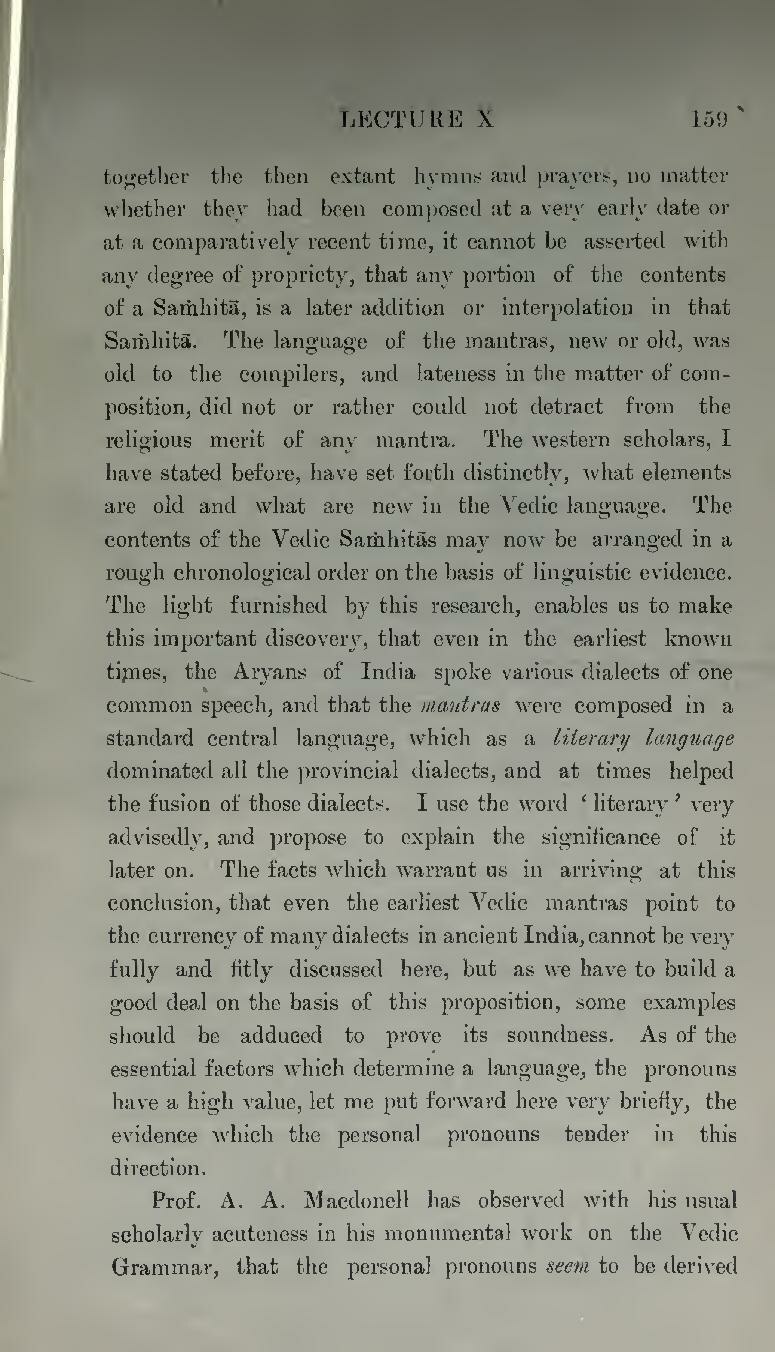together the then extant hymns and prayers, no matter whether they had been composed at a very early date or at a comparatively recent time, it cannot be asserted with any degree of propriety, that any portion of the contents of a Saṁhitā, is a later addition or interpolation in that Saṁhitā. The language of the mantras, new or old, was old to the compilers, and lateness in the matter of composition, did not or rather could not detract from the religious merit of any mantra. The western scholars, I have stated before, have set forth distinctly, what elements are old and what are new in the Vedic language. The contents of the Vedic Saṁhitās may now be arranged in a rough chronological order on the basis of linguistic evidence. The light furnished by this research, enables us to make this important discovery, that even in the earliest known times, the Aryans of India spoke various dialects of one common speech, and that the mantras were composed in a standard central language, which as a literary language dominated all the provincial dialects, and at times helped the fusion of those dialects. I use the word 'literary' very advisedly, and propose to explain the significance of it later on. The facts which warrant us in arriving at this conclusion, that even the earliest Vedic mantras point to the currency of many dialects in ancient India, cannot be very fully and fitly discussed here, but as we have to build a good deal on the basis of this proposition, some examples should be adduced to prove its soundness. As of the essential factors which determine a language, the pronouns have a high value, let me put forward here very briefly, the evidence which the personal pronouns tender in this direction.
Prof. A. A. Macdonell has observed with his usual scholarly acuteness in his monumental work on the Vedic Grammar, that the personal pronouns seem to be derived
